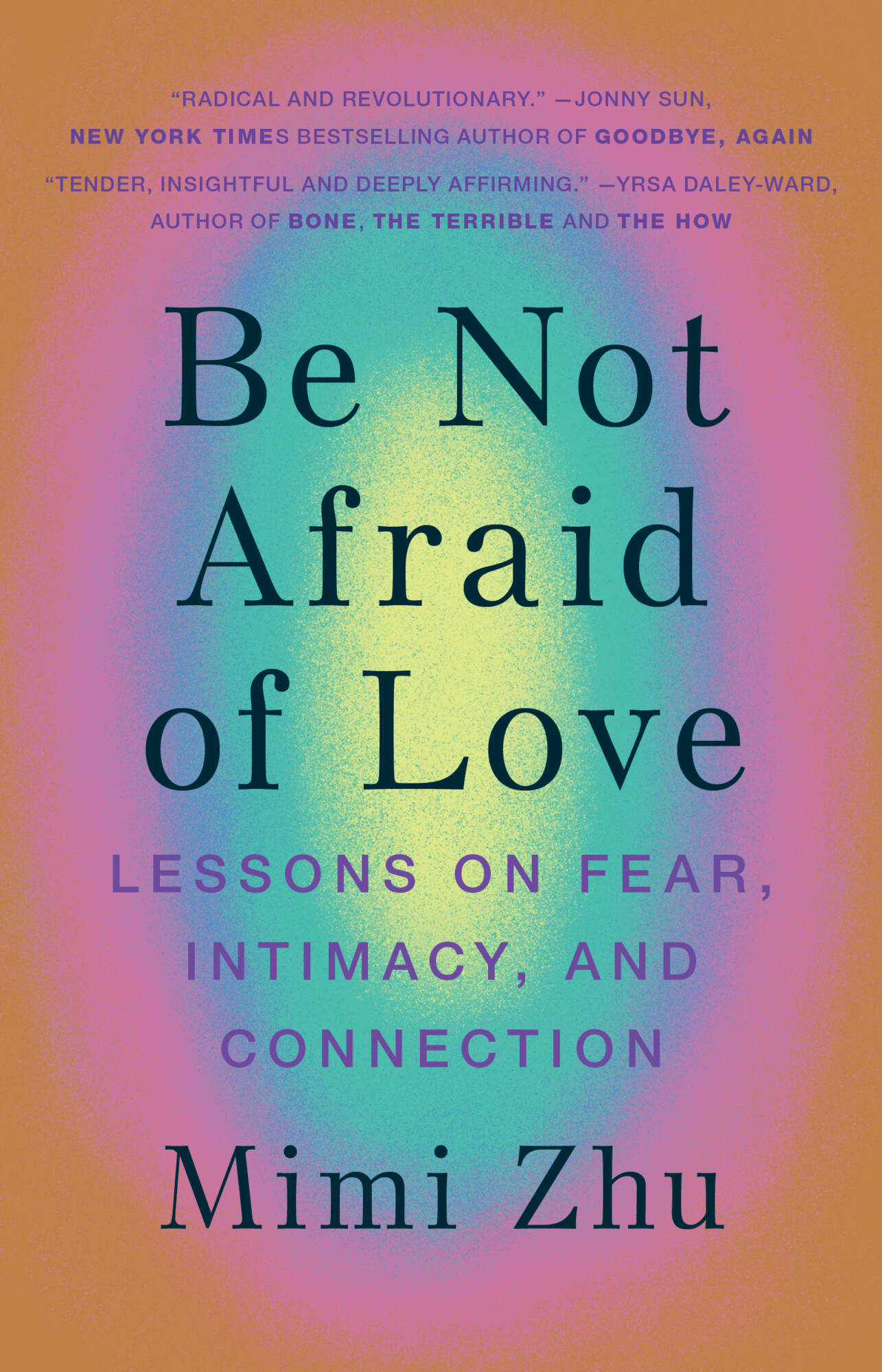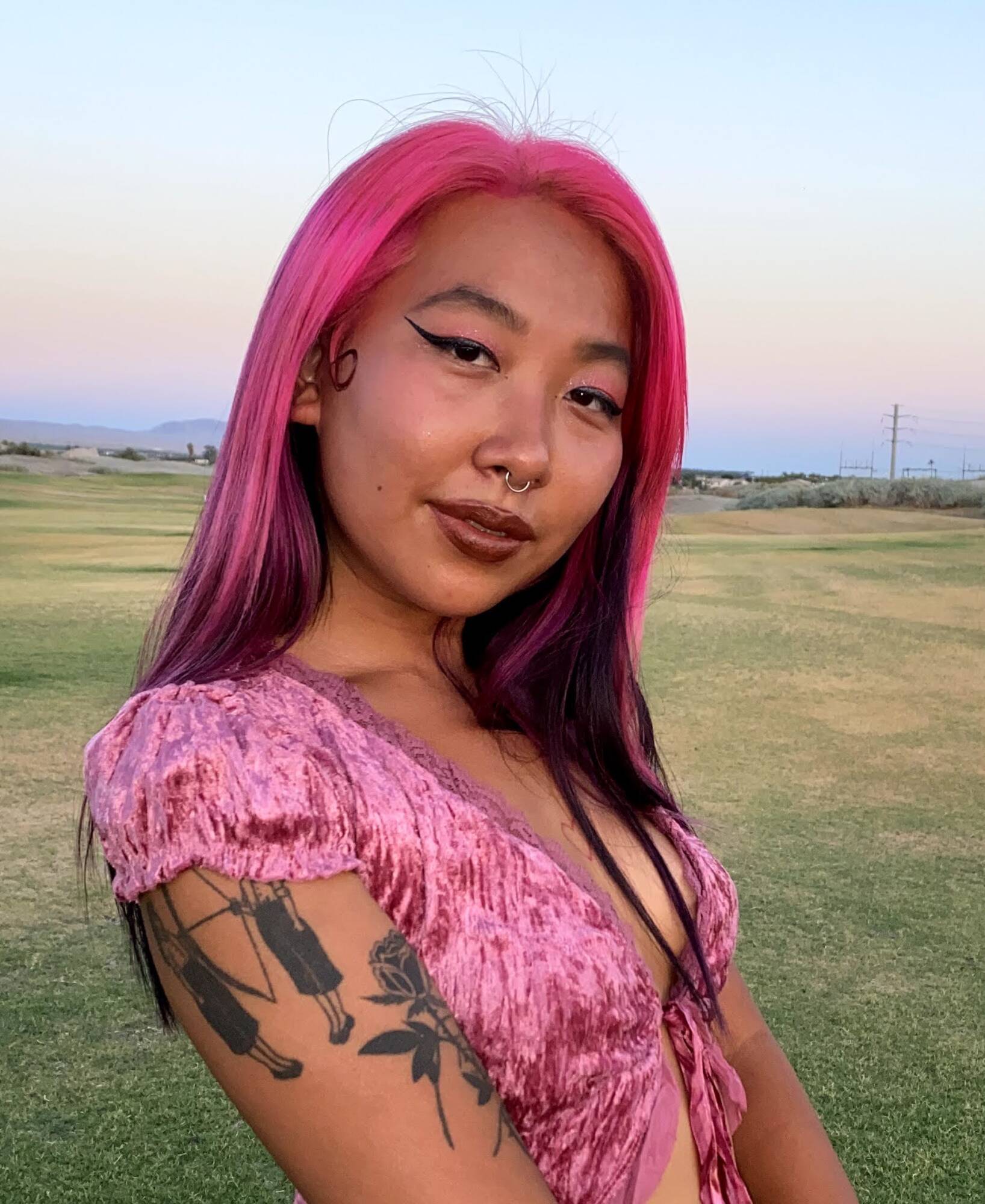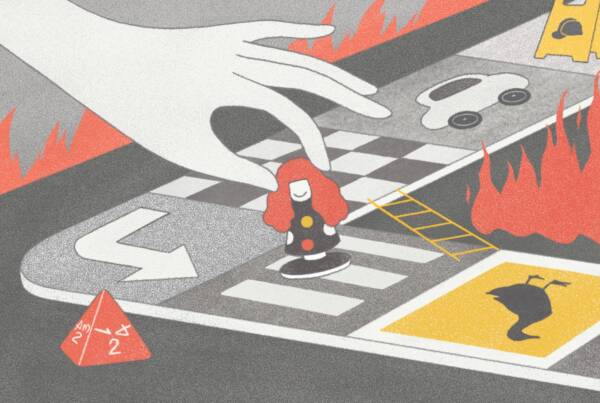Excerpt from Mimi Zhu’s new book Be Not Afraid of Love // photograph by Priscilla Du Preez
This is an edited extract from Be Not Afraid of Love by Mimi Zhu, published by Hardie Grant Books. Available nationally from 7th of September, RRP $27.99.
The Chinese characters for anger, 生气 (shēng qì), relay a poignant translation of the nature of rage. Each Chinese character represents its own being, element, or sensation, and when combined, they create new and poetic verbs, feelings, and meanings: 生 (shēng) means to “give life to,” and 气 (qì) means “a vital breath,” or “air,” which is the same 气 (qì) that you find in the beginning of 气功 (qì gōng), the popular traditional Chinese movement meditation that works with redirecting bodily energy and breath. When conjoined in a dance of new meaning, not only do these two Chinese characters 生气 (shēng qì) mean anger, but they also literally translate to the poetic phrase “to give life to a vital breath.” This definition has helped me see that anger holds a sacred life of its own. We are responsible for bringing anger to life, and life to anger. Rage is a sacred and necessary energy that is part of our being, and part of Earth.
Anger is often seen as the villain. It sprouts from seedlings of fear and is frequently born of an urgency to protect and dignify what you love. It works with many different emotions and manifests expressions such as resistance, action, revenge, violence, and protection. Anger lives in pulsing relationship with other complicated feelings, such as sorrow, shame, and insecurity. Because it can be such an overwhelming and powerful feeling, it is helpful to pay attention to what other emotions it is working with; otherwise, anger can become impulsive and dominating. When we think of anger as a vital breath, we must think about the source of its power and what we express in each sacred exhale.
Can we consider anger a loving force? You are rageful, you are fearful, you are protective, and you are also loving. All of these truths coexist. At the core of a love-based anger, we are fighting for our sacred survival. Love encourages us not only to protect ourselves but also to honor our being and all that we are in relationship with. When we cannot acknowledge the love that holds our vital breath, we are overtaken by a fear-based rage that drives us toward feelings of resentment, shame, and vengeance. During a discussion for the podcast For the Wild, Lama Rod Owens said, “Anger is the bodyguard of our woundedness.” Anger, like numbness, is another sacred protector of our survival. It is a loving act to protect yourself, a loving act to resist harm, and a loving act to allow yourself the sacred breath of anger. Everything brings us back to love.
There is no emotion I would ever tell you not to feel. I do not write to encourage you to overcome any emotion. Instead, I encourage you to sit with each emotion. Perhaps even go deeper. There are so many short-term and buyable solutions to anger, anxiety, and depression that encourage us not to feel, or to “transcend,” negative thought. This ostracizes us from our own feelings and from people who are experiencing heavy emotions. When somebody feels deeply hurt or betrayed, it can be a harmful response to tell that person to immediately “overcome” or “be above” their painful feelings. Each feeling we hold is the natural conjuring of an energy that exists within us, though that feeling is not all of us. Emotion is energy, and energy is a vital part of our life force.
I like to imagine every emotion as a vital sacred protector, an ancestor embodied as a feeling, telling me in their own language what I have been taught to overlook. They all have homes within us. Anger is the sacred breath that we must allow ourselves to release, for it holds a vital truth about what truly matters most to us. Anger is an invitation to connect deeper with yourself and to uncover what you are trying to protect. Are you trying to protect something that your ego is attempting to control, or are you trying to protect your sacred beingness and all that you love? What are you willing to let go of, and what are you willing to fight for? Anger is the powerful force that allows us to bring violent systems of harm to their destruction, while also giving breath to loving possibilities of creation. Allow yourself to breathe.
The first time X and I spoke about the assault was three months after it happened. I was thousands of miles away from Oakland, in my childhood home in Australia, because I needed to be close to familial support. Each morning at the crack of dawn, I woke up from fuzzy and indecipherable nightmares, which I would later learn was a symptom of post-traumatic stress disorder (PTSD), covered in sweat, my heart trembling with palpitations. Each night X came to visit me in my dreams, and even though I could not see him or speak to him, I could sense that his lingering presence was there.
One night, I dreamed of heaven. This rococo-style paradise was adorned with blushing opal skies and sunbeams that flirtatiously peaked through flocculent fogs. I was standing on one particularly illuminated fluffy cloud, blissful and wondrous, gazing at an eternity of dramatic pastels. As I peered into the dreamy abyss, I saw a figure in the distance. It was X. For the first time in months, I could see his face. He was not alone. He was encircled by crowds of people; I recognized some of them as mutual friends whom I had talked to about the assault. They were applauding him, adoring him, and celebrating him. Then they all turned toward me and scowled. It became clear that this was his sanctuary, and I was an intruder.
I woke up in shock, feeling betrayed and confused, and drenched in cold sweat. I was terrified of the vivid sight of his face, both strange and familiar at the same time. For some reason, he still felt close by. I checked my phone to bring me back to reality and, to my dismay, his name was there. Two missed calls and a text message. He had called while I was dreaming of his heaven. The text message simply read “I love you.”
My shock bubbled into a palpable rage, and my anger took me by surprise. All the anger I had suppressed came seething to the surface. I wanted to yell at him and demand justice and repair. I wanted to hear him grovel and beg for my love. I decided to call him.
“HOW COULD YOU DO THIS TO ME?!”
“IF YOU LOVED ME, YOU WOULDN’T HAVE HURT ME!”
“WHY DID YOU WAIT THIS LONG TO SAY SOMETHING?!”
I had nearly forgotten that X was on the other end of the phone as I screamed, distraught and choking on furious tears. For months I had sat ashamedly in a thick stew of my emotions, not allowing rage to come to the surface. I had told myself that I was above anger, that becoming rageful was only “stooping to his level.” I thought that getting angry would make me as violent as him. All these sentiments were birthed from the murky depths of shame, a place where I redirected all my rage toward myself.
He stammered a helpless “It wasn’t me . . . that’s not who I am . . . I don’t know what came over me.” He blamed his violence on the alcohol, and I could hear that he was in denial about what he had done. During the assault, it seemed to me that he had been possessed by an otherworldly force. This is what happened when he did not endeavor to understand his anger; it became a stranger even to him. I spent what felt like a lifetime trying to solve the riddle of his rage because he was too afraid to know it for himself.
“IF IT WASN’T YOU THEN WHO THE FUCK WAS IT? YOU ARE A GOOD-FOR-NOTHING ABUSER WHO DESERVES TO ROT IN HELL.”
I was light-headed and under a spell of my own. All my furious thoughts were escaping their cages. I felt dizzy, delighted, powerful. Through the avalanche of feeling I allowed myself a moment of monstrosity: I realized that I did want to hurt him in return. There was a tip in the scales, and now he seemed almost afraid of me. I relished the feeling. In the shape of these outrageous words, the anger expelled itself from me, like poison. I started to sob.
For a long time after this call, I thought that I was a terrible person for all the livid thoughts and feelings that flooded through me when I spoke to X, but then I realized that these reactions were only a small part of my expansive vitality. I’ve since learned that when rage overtakes me, I must remember that I am not rage in full totality. I am a being who experiences rage; rage is a vital part of my emotional expansiveness that is deserving of healthy release. I have to express my rage in safe and sacred ways. When I honor my rage, the anger simmers into a clarifying energy, one that works to act for change.
Truthfully, I deeply wanted things between us to change, and I wished desperately for our love to be reborn. It took me a long time to understand that my safety is my number-one priority. The will to change my circumstances needed to start from the protection of my wellbeing with safe distance and firm boundaries. X’s rage had nothing to do with me and was also not my responsibility to heal, especially because my safety was at risk. His rage had developed a life of its own inside him because he had no healthy ways of releasing it. Either he forced himself to not feel his rage or he forced it upon others— and that is abuse.
While honoring anger is important, it is not an excuse to be harmful. Safe ways to honor our anger include expressing that anger in solitude, in journals, in unison with others, with support by our side, through dancing, singing, or yelling into the void. To honor anger in our loving relationships, we must let it simmer before we communicate our frustrations. We must breathe our vitality before we scream it.
To honor rage, we must allow it to see the light. Like a deep exhale, anger can escape the fortresses of our bodies and come out of the shadows. Anger is a reaction to betrayal, sadness, and yearning, and our bodies remember it and store it deep within us. Anger needs to be expressed healthily without violence and with care.
Instead of trying to suppress or avoid anger, we can try to see it with softness. Where is the rage coming from? What wounds is anger trying to protect? And how should we release this energy from our body safely and responsibly?
We must commit to building a world where we can all experience the freedom of nonviolent expressive rage in safety. We need to build a place that does not define justice as seeking revenge, punishing, and replicating harm. We can learn from the masters of qì gōng (气功) who move and release the stored sacred energy that lives within us. While we breathe life into the vitality of anger, we must also allow that breath to flow into all our being, and to go deeper into the wounds that need tender tending to.
Now when I am angry, I get to know my rage as more than just a reaction. I scream into vast and open spaces, I process it out loud, I thrash in rapturous dance, and I scribble furious thoughts into the sacred seclusion of my journal. As I practice healthy expressions of anger, the anger flows through my entire body. It triggers old betrayals and new sensations, and I must allow the impulse for pettiness or retaliation to pass. Anger has given me permission to have a full bodily cry, and it has given me the drive to fight for my survival. It draws boundaries, makes space, and illuminates difficult truths. Not only does anger allow me to give life to vital breath, but it also allows me to see how sacred my breath is in the first place. Anger is not an irrational fear but a luminescent passage that brings us back to love. Anger pushed me to leave X and finally return to myself.
As I write this, I am angry, and from each rageful word flows a deep inner compassion, the softness of my wounds, and the demand for radical and urgent change.









